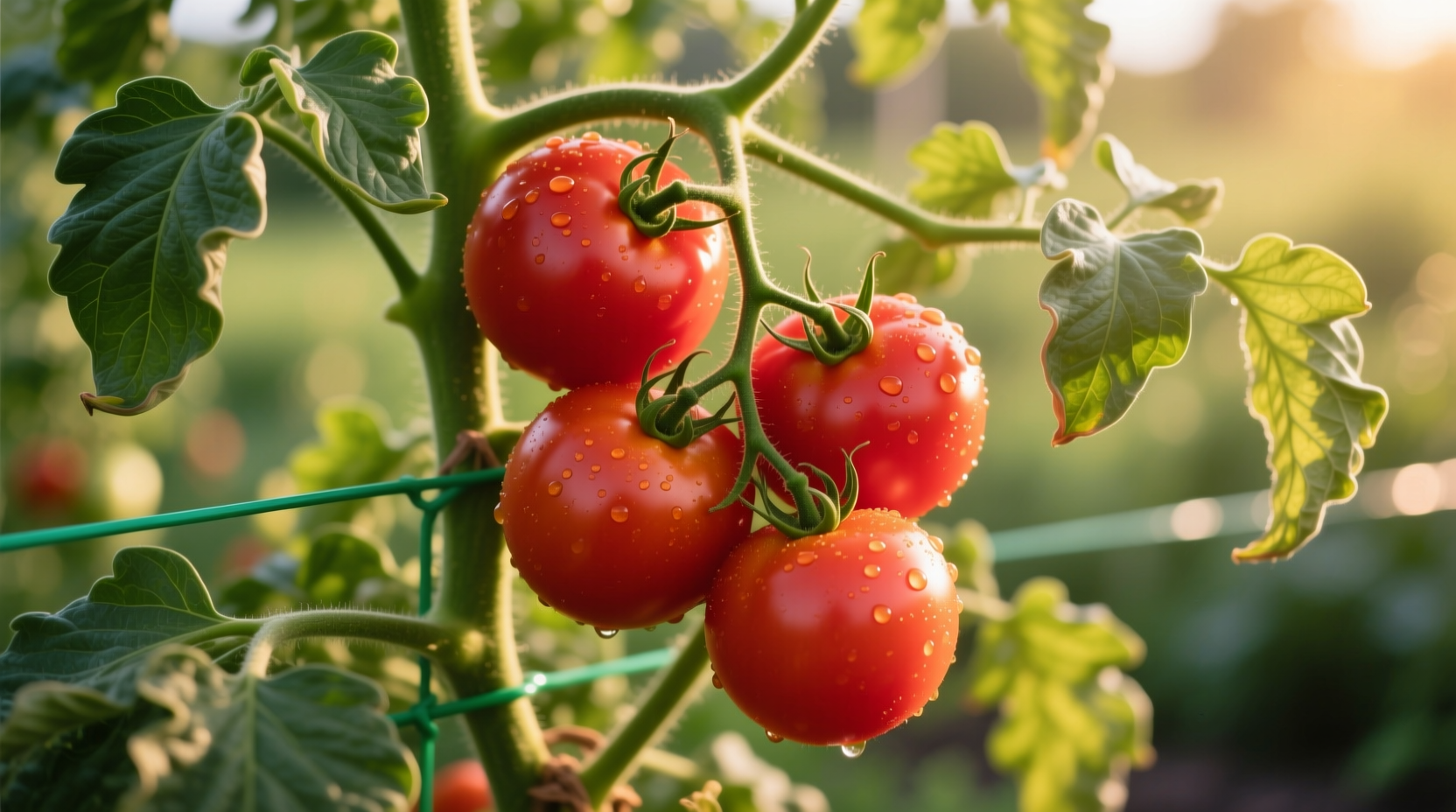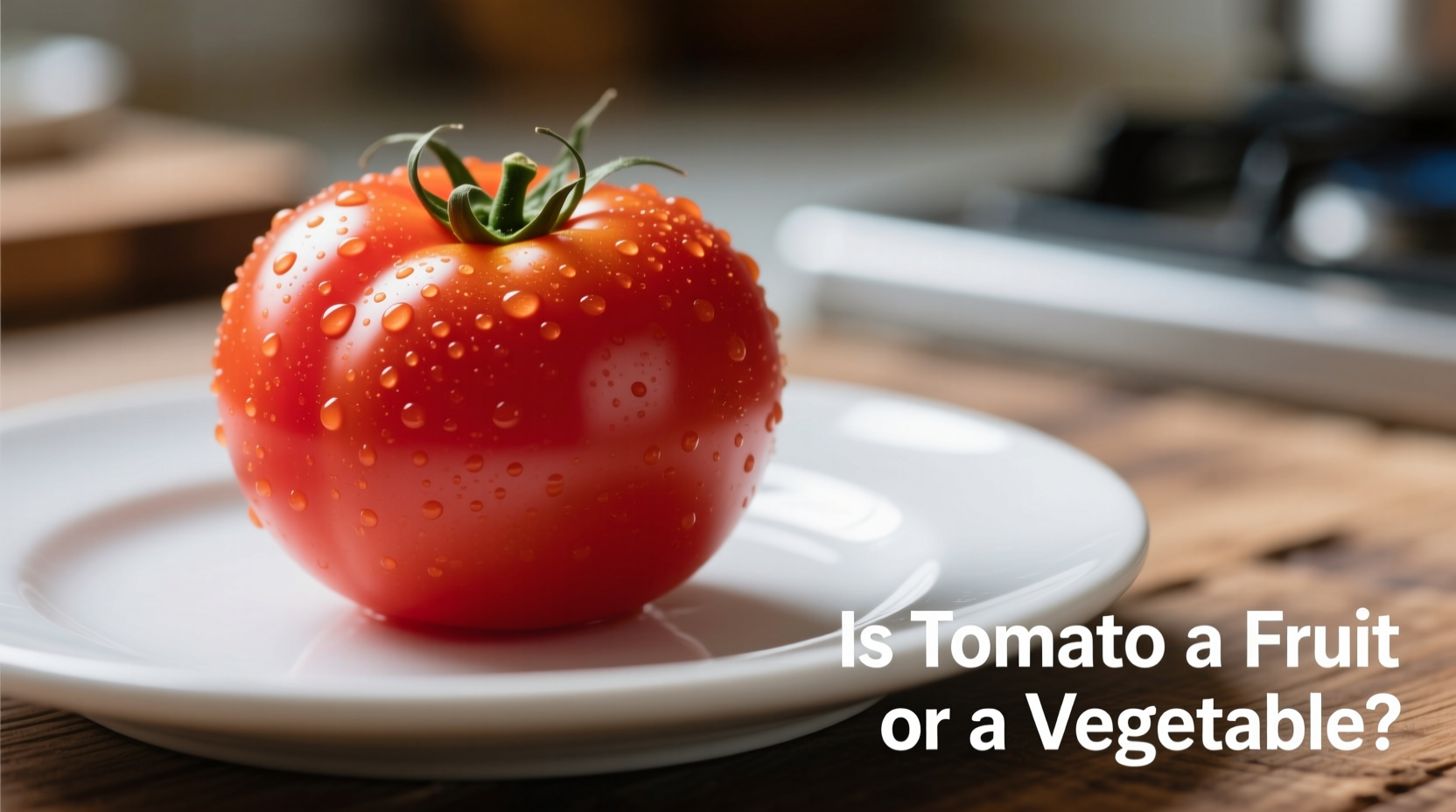Ever found yourself in a kitchen debate about whether tomatoes belong with bell peppers or apples? You're not alone. This seemingly simple question has sparked scientific discussions, legal battles, and culinary confusion for over a century. In this article, you'll discover the definitive answer to "is tomato a fruit or vegetable," understand why both classifications exist, and learn how this knowledge impacts your cooking and gardening decisions.
The Botanical Truth: Why Tomatoes Are Scientifically Fruits
From a botanical perspective, the classification is clear-cut. Botanists define a fruit as the mature ovary of a flowering plant, usually containing seeds. Tomatoes develop from the flower of the Solanum lycopersicum plant and house numerous seeds within their fleshy interior. This places them squarely in the fruit category alongside cucumbers, zucchini, and eggplants—yes, all technically fruits!
According to the Encyclopedia Britannica, "The tomato is a dicotyledonous flowering plant that produces a berry-type fruit." This scientific classification hasn't changed since botanists first described the plant. The confusion arises because tomatoes don't fit our culinary expectations of what a "fruit" should be—sweet and typically eaten as dessert.

Culinary Classification: Why Chefs Treat Tomatoes as Vegetables
In the kitchen, classification follows usage rather than scientific definition. Chefs and home cooks categorize ingredients based on flavor profile and culinary application. Tomatoes' relatively low sugar content (compared to apples or berries) and savory flavor profile make them function as vegetables in recipes.
This practical distinction matters significantly in cooking. As culinary historian Sarah Johnson explains, "When developing recipes, professional kitchens separate ingredients by how they behave in cooking, not by their botanical origins. Tomatoes provide acidity and umami that balance dishes in ways sweet fruits cannot." This explains why you'll find tomatoes in salads, sauces, and savory dishes rather than desserts.
The Supreme Court Decision That Changed Everything
The tomato's dual identity reached the highest court in the land in 1893. In Nix v. Hedden, the US Supreme Court had to determine whether tomatoes should be classified as fruits or vegetables for tariff purposes. Botanically, they acknowledged tomatoes as fruits, but ruled they should be taxed as vegetables because "they are used in the same way as potatoes, peas, beans, and other vegetables."
| Classification Type | Tomato Status | Key Determining Factors |
|---|---|---|
| Botanical | Fruit | Develops from flower ovary, contains seeds |
| Culinary | Vegetable | Savory flavor, used in main dishes |
| USDA Dietary Guidelines | Vegetable | Nutritional profile aligns with vegetables |
| US Legal (Tariff Act) | Vegetable | 1893 Supreme Court ruling (Nix v. Hedden) |
Practical Implications for Your Kitchen and Garden
Understanding this dual classification helps you make better decisions whether you're cooking or gardening. When growing tomatoes, remember they share botanical characteristics with other fruiting plants like peppers and eggplants, meaning they have similar soil and nutrient requirements.
In meal planning, recognizing tomatoes as fruits explains why they pair well with other acidic ingredients. "Tomatoes' fruit status explains their perfect pairing with balsamic vinegar in Caprese salad," notes culinary expert Sarah Johnson. "The natural sugars in both ingredients complement each other in ways that wouldn't work with traditional vegetables."
For nutrition, the USDA categorizes tomatoes with vegetables in dietary guidelines because their nutritional profile—particularly low sugar content and high lycopene—aligns more closely with vegetables than with sweet fruits. This classification affects how nutritionists design meal plans and dietary recommendations.
Global Perspectives on Tomato Classification
The tomato classification debate isn't universal. In many European countries, tomatoes have always been accepted as fruits in both scientific and culinary contexts without the same confusion seen in American kitchens. The European Union's Common Agricultural Policy lists tomatoes under "fresh fruit and vegetables," acknowledging both aspects of their identity.
Interestingly, Tennessee officially designated the tomato as both the state fruit and state vegetable in 2003, recognizing its dual identity. This legislative acknowledgment reflects how deeply embedded this classification question has become in cultural consciousness.
Why This Matters Beyond Botanical Trivia
Understanding the tomato's dual classification helps you navigate recipe instructions, gardening advice, and nutritional information more effectively. When a recipe specifies "vegetables," it's referring to culinary usage, not botanical accuracy. Similarly, gardening resources discussing "fruiting plants" will include tomatoes alongside peppers and eggplants.
This knowledge also helps when exploring international cuisines. In Mediterranean cooking, tomatoes function as foundational vegetables in dishes like ratatouille and shakshuka, while in some Asian cuisines, they're treated more like fruits in sweet-sour preparations. Recognizing these cultural distinctions enhances your cooking versatility.











 浙公网安备
33010002000092号
浙公网安备
33010002000092号 浙B2-20120091-4
浙B2-20120091-4